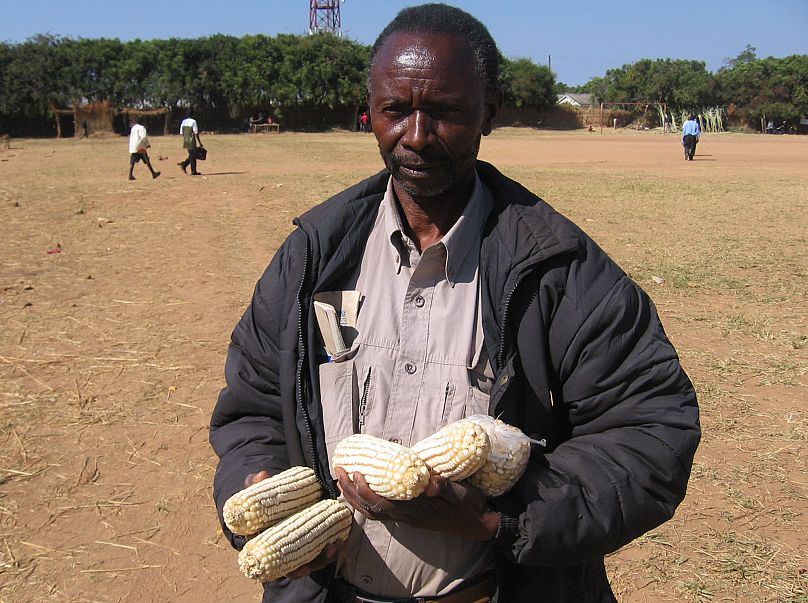The world is facing an ‘adaptation emergency’. How can world leaders fill the growing gap at COP28?
Global efforts to adapt to a heating world are falling dangerously short, according to the UN.
The gulf between the money needed by poorer countries to adapt to climate change and what they are receiving from richer nations is wider than ever.
“As needs rise, action is stalling,” the UN Secretary-General António Guterres warns, as this year’s Adaptation Gap Report shows the shortfall is 50 per cent bigger than previously thought.
Back in 2009, developed countries pledged $100 billion (around €94bn) a year in climate finance to developing nations by 2020, to assist with mitigation and adaptation efforts.
That finance has still not been fully secured, and the annual gap for adaptation alone now stands at between $194 billion and $366 billion (€183bn to €343bn), according to the new report from the United Nations Environment Programme (UNEP).
“Action to protect people and nature is more pressing than ever,” says Guterres. “Storms, fires, floods, drought and extreme temperatures are becoming more frequent and more ferocious, and they’re on course to get far worse.”
Mobilising more money to help people adjust to these climate impacts will be a major focus of the COP28 climate summit starting later this month in Dubai.
Why is adaptation finance falling short?
Existing financial flows reached just $25 billion (€23bn) during the 2017-2021 period, UNEP found, dropping by 15 per cent in 2021.
That year, at COP26 in Glasgow, developed countries pledged to double adaptation finance from 2019 levels by 2025, to achieve a better balance between adaptation and mitigation.
"Mitigation is often more interesting for donors because the atmosphere is a global public good and also because investments in mitigation often pay off,” says UNEP co-author Pieter Pauw, of the Eindhoven University of Technology.
UNEP estimates that developing countries will require $215 to $387 billion (€202-€363bn) per year until 2030 to adapt to climate impacts, with the figure set to rise significantly by 2050.
"The numbers are not that big: if you compare the $100 billion to the money that the United States spends on its military, and that was spent on COVID or to save its banks, this is peanuts," adds Pauw.
How is this adaptation emergency impacting people?
The financial needs of developing countries are now 10 to 18 times bigger than the money they are actually receiving, the UNEP says.
In real terms, this means that climate-vulnerable countries are struggling to protect their populations from rising temperatures and sea levels.
"The widening gap in adaptation finance is a stark indicator of years of neglect, leaving countless vulnerable people exposed to escalating climate calamities,” says Harjeet Singh, head of global political strategy at Climate Action Network International.
“Developing countries stand ready, awaiting the necessary funds to safeguard their people against imminent climate disasters.”
Jessica Bwali, Global Campaigns Associate at charity Tearfund, describes the impact that insufficient funding is having on Zambian farmers, for example. “[They] are being abandoned to face rapidly intensifying climate disasters and crop failures.
“Adapting requires resources for research to identify locally resilient edible crop varieties; education to inform farming communities; and equipment like solar-powered water pumps and irrigation systems to manage new patterns of drought and deluge.”
These expenses are unaffordable for the poorest and most vulnerable farmers.
A lack of adaptation action also means greater loss and damage costs down the line.
“Almost all South Asia nations are caught in a loop of climate induced disasters and consequent economic losses,” says Sanjay Vashist, director of Climate Action Network South Asia.
This loop is happening despite many countries having adaptation plans in place.
Greater investment in adaptation makes sense, Georgia Savvidou, a researcher at Chalmers University of Technology and another UNEP report co-author explains. Every $1 billion (€0.9bn) spent on tackling coastal flooding, for example, would help avoid $14 billion (€13bn) in economic damage.
Seven ways to increase climate finance
More money is needed to address what the UN chief calls an “adaptation emergency”, and the new report identifies several ways to close the gap.
“Developed countries must present a clear roadmap to double adaptation finance as promised - prioritising grants over loans - as a first step towards devoting half of all climate finance to adaptation,” says Guterres.
As well as the core calls for increasing international public finance; ramping up domestic spending on adaptation; and increasing private sector finance, UNEP is proposing four additional approaches:
- ‘Remittances’ or payments by migrants to family and friends in their home countries. UNEP describes this as a potentially supplementary source of finance at the local level.
- More money for small and medium-sized businesses, as they make up the bulk of the private sector in developing countries.
- Reform of the global financial architecture - for example through the Bridgetown Initiative, which can help boost developing countries’ resilience to climate shocks, including by lightening their debt burden.
- Making all finance flows consistent with low-carbon and climate-resilient development, as per the Paris Agreement.
Guterres also says that a windfall tax should be levied on fossil fuel companies to compensate for climate losses.
“Fossil fuel barons and their enablers have helped create this mess; they must support those suffering as a result,” he says. “We are in an adaptation emergency. We must act like it.”
"We literally have a world to win here,” concludes Pauw, “It is time for developed countries to step up and provide more."












